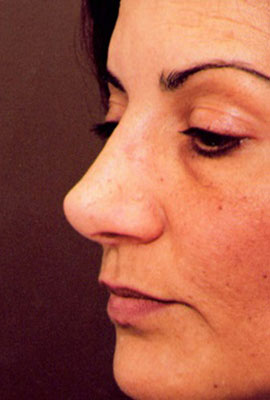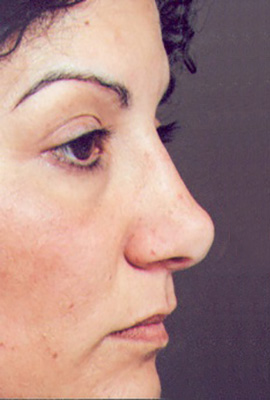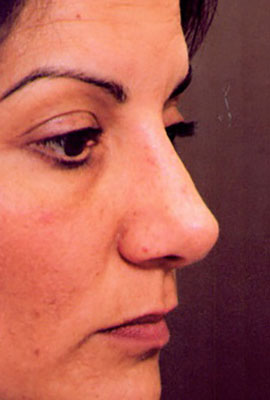Description:
This patient’s prior rhinoplasties had left her nose collapsed. I used a combination of bone from the outer skull and ear cartilage to rebuild the bridge, tip, and airway. The patient is shown prior to any surgery. Two prior open rhinoplasties and a columellar strut have left asymmetrical nostrils and a distorted lower nose that is too large for the upper nose. These are typical open rhinoplasty deformities. When I reviewed a series of secondary rhinoplasty patients for Plastic and Reconstructive Surgery, the major differences between patients who had been treated open and closed previously was that the open patients had undergone more operations and had more significant postoperative deformities. Secondly, most of the deformities were located in the nostrils, tip, and columella in the open patients, which is understandable because those are the areas that the surgeon can attack most aggressively and where most of the open rhinoplasty maneuvers are carried out. The patient was treated by resecting the columellar strut, reforming the tip with grafts, and changing the contour of the nasal bridge with grafts so that the nose was better balanced. The surgeon is always limited by the volume of the patient’s skin. When noses cannot be reduced further (because the skin will not shrink more), the patient’s best option is to create as much proportion and shape as possible. Postoperatively the patient has better balance, a more normal nasal shape, and a much better airway. Despite the revision, the columella remains permanently scarred.








